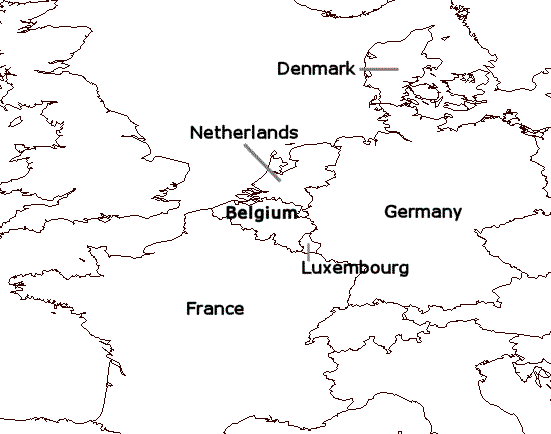Describe
 PREVIOUS
NEXT
PREVIOUS
NEXT
| IBM ILOG Solver User's Manual > The Basics > Modeling and Solving a Simple Problem: Map Coloring > Describe |
Describe |
INDEX
 PREVIOUS
NEXT
PREVIOUS
NEXT
|
The problem involves choosing colors for the countries on a map in such a way that at most four colors (blue, white, yellow, green) are used, and no neighboring countries are the same color. In this exercise, you will find a solution for a map coloring problem with six countries: Belgium, Denmark, France, Germany, Luxembourg, and the Netherlands. Map coloring problems are closely related to graph coloring problems and have many real world applications. For more information, see Chapter 12, Setting Filter Levels: Coloring Graphs.

Step 1 - | Describe the problem |
The first step in modeling and solving a problem is to write a natural language description of the problem, identifying the decision variables and the constraints on these variables.
Write a natural language description of this problem. Answer these questions:
Decision variables and constraintsDecision variables are the unknown information in a problem. Each decision variable has a domain of possible values. Constraints are limits or restrictions on combinations of values for decision variables. For more information on decision variables and constraints, see the section "Model". |
| © Copyright IBM Corp. 1987, 2009. Legal terms. | PREVIOUS NEXT |